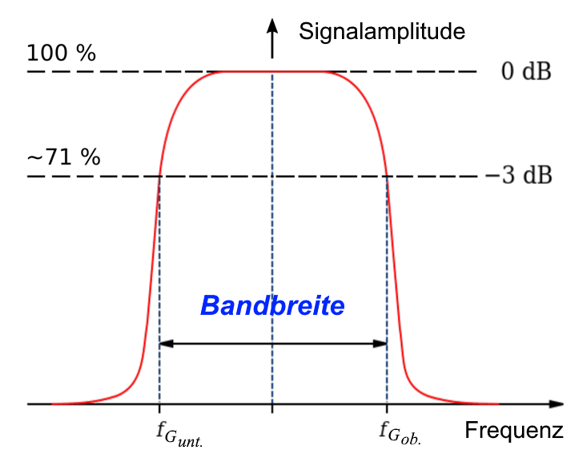Bandwidth is a basic element in signal processing. It describes the range of frequencies in the spectrum; i.e. the frequencies a signal contains. Bandwidth is defined by upper and lower cut-off frequencies. Internally, the upper cut-off frequency is limited in a device by the attenuation characteristics of the system. The lower bandwidth can even be zero. In this case the bandwidth corresponds to the upper cut-off frequency. Typically, one uses the 3-dB criterion, which corresponds to a drop in signal amplitude to roughly 71%. The maximum bandwidth of an eddy current test instrument is an important feature of such eddy current instruments, and is not to be mistaken for the test frequency range that is available. It refers to the frequency spectrum of the demodulated eddy current signal and can be specifically limited to the application-specific requirements using filter settings (high-pass > lower cut-off frequency or low-pass > upper cut-off frequency). This way it is possible to weaken or eliminate interference signals, as long as their frequency spectrum clearly differs from that of the signals of interest (e.g. crack indications).

